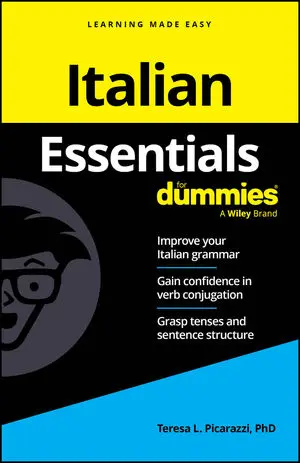Learning numbers and counting in Italian isn't complicated. In fact, the Italians follow many of the same patterns that we do in English. There are a few differences, but it's when it comes to numbers and counting in Italian, it's really just a question of memorizing.
In Italian, as in English, there is a unique number from 0 – 16. After that they add the next number to the tens, making one word. So, 17, is the word for 10 followed by the word for 7 and so on.
Numbers 1 to 19 in Italian
| uno | 1 |
| due | 2 |
| tre | 3 |
| quattro | 4 |
| cinque | 5 |
| sei | 6 |
| sette | 7 |
| otto | 8 |
| nove | 9 |
| dieci | 10 |
| undici | 11 |
| dodici | 12 |
| tredici | 13 |
| quattordici | 14 |
| quindici | 15 |
| sedici | 16 |
| diciassette | 17 |
| diciotto | 18 |
| diciannove | 19 |
For the numbers in the twenties, thirties, forties, and so on, just add the number to the tens, with the exception of when you add a 1 or an 8. For these two numbers, drop the final "–i." For example, venti (20), ventuno (21), ventidue (22), venticinque (25), ventotto (28). See? It's not ventiuno or ventiotto.
Numbers 20 to 99 in Italian
| venti | 20 |
| ventuno | 21 |
| ventidue | 22 |
| trenta | 30 |
| trentuno | 31 |
| quaranta | 40 |
| quarantuno | 41 |
| cinquanta | 50 |
| sessanta | 60 |
| settanta | 70 |
| ottanta | 80 |
| novanta | 90 |
When you add the tre, the -e takes an accent: ventitrè.
Larger numbers in Italian follow the same formula.
Numbers 100 and higher in Italian
| 100 | cento |
| 101 | centuno |
| 102 | centodue |
| 150 | centocinquanta |
| 1,000 | mille |
| 2,000 | duemila |
In Italian, large numbers are said in the same order that we use for English. For example, 1916 would be 1916 (millenovecentosedici) (literally: one thousand, nine hundred, and sixteen).
The following phrases can help you when talking about numbers.
Quanti anni hai? (How old are you?)
Ho ventitrè anni. (I'm 23 years old.)
Quanto viene? (How much does it come to?)
Sei euro sessanta. (6 euros and 60 cents.)
Quanto è per una camerasingola? (How much is it for a single room?)
Centoventi euro. (120 Euros)






